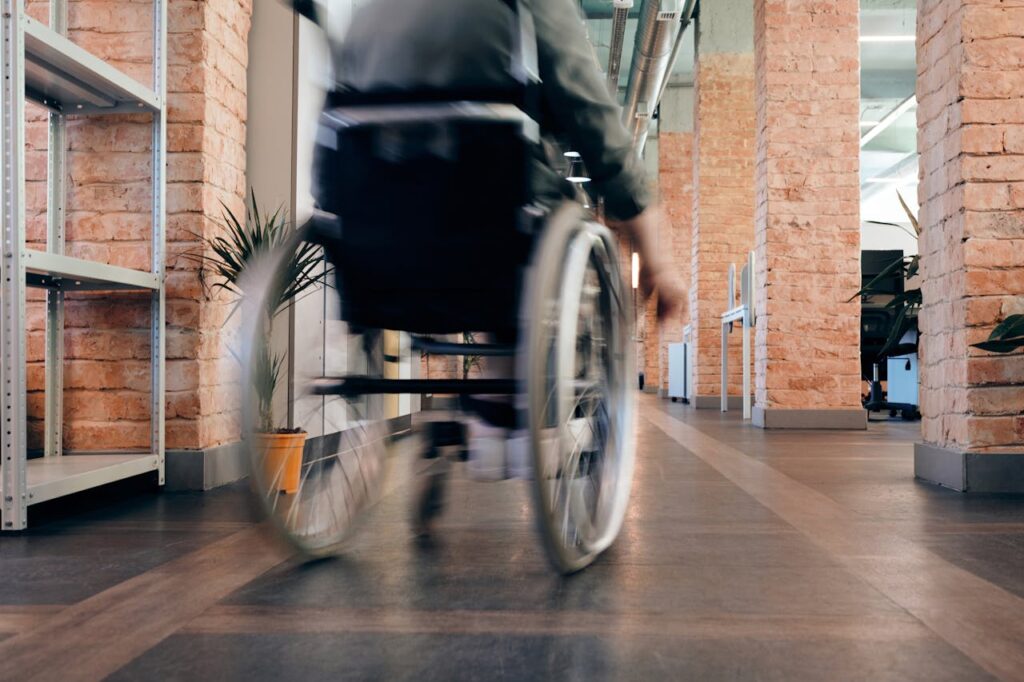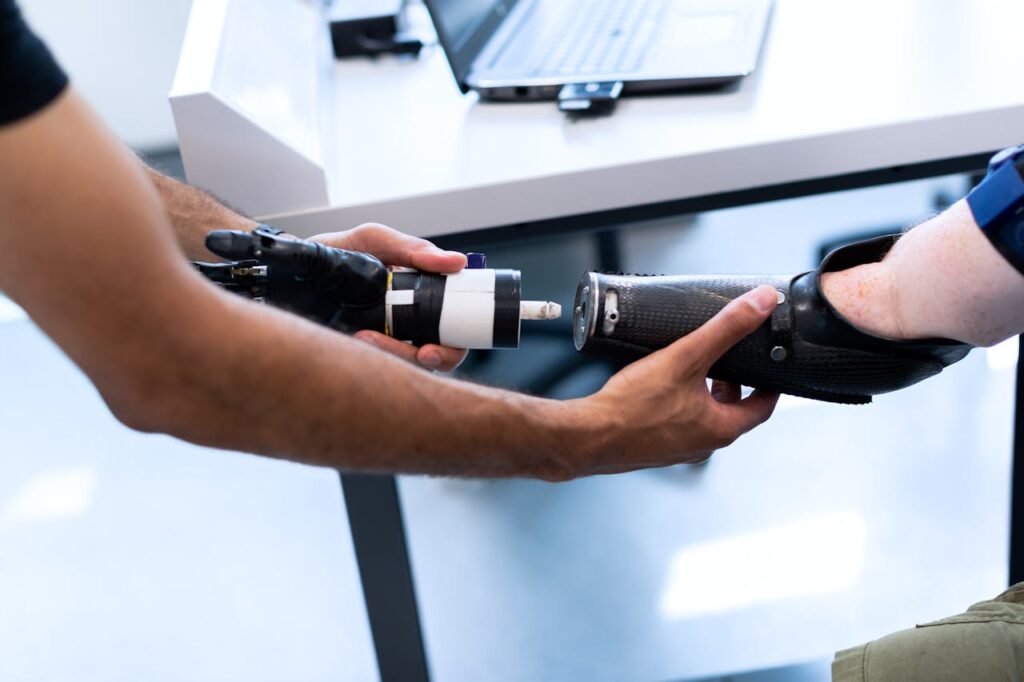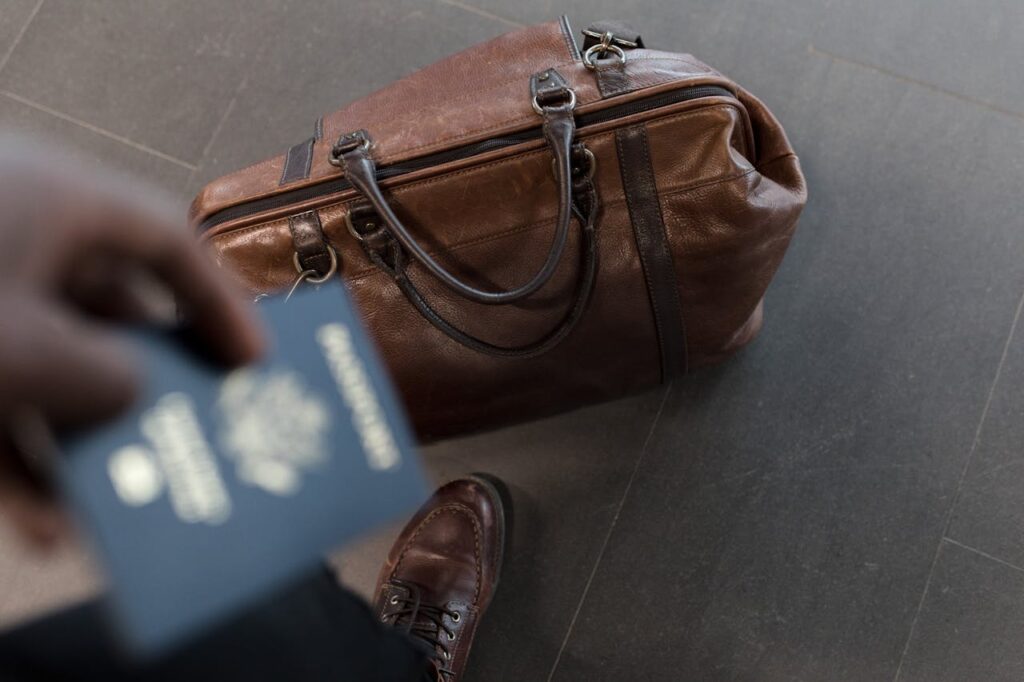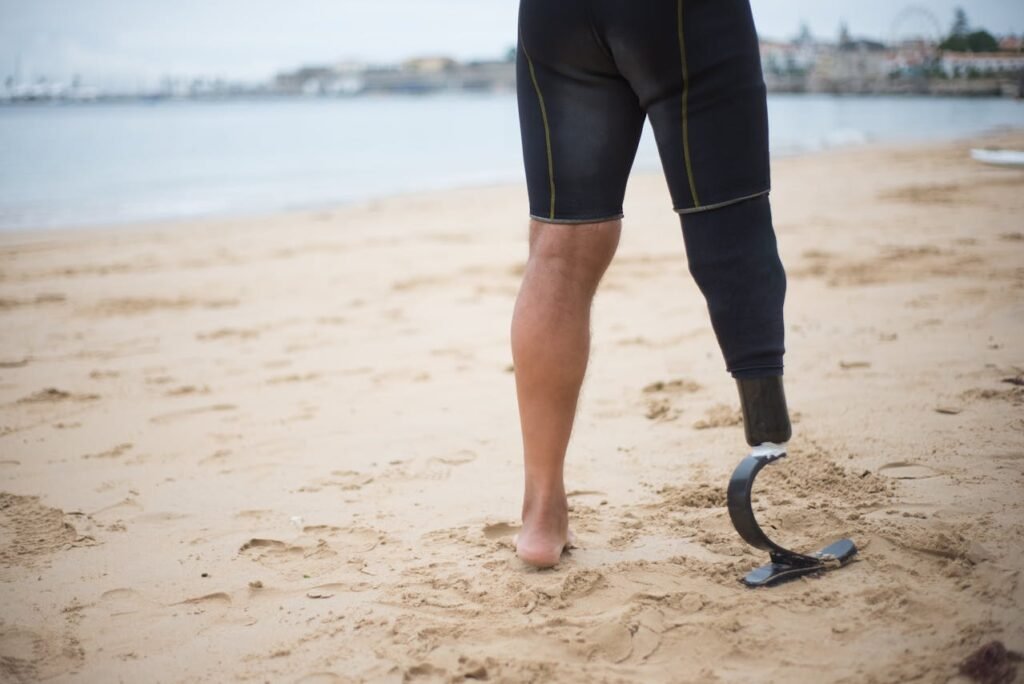Traveling is a joy that opens up new experiences, perspectives, and connections. However, for individuals with disabilities, the process of planning and executing a trip can come with unique challenges. From navigating accessibility at destinations to managing personal needs on the go, traveling requires thoughtful preparation and adaptability. But with the right strategies and resources, it’s entirely possible to enjoy the journey and embrace the adventure.
This article offers practical, actionable tips for individuals with disabilities to make traveling more accessible, enjoyable, and stress-free. Whether you’re planning a weekend getaway or a long international trip, these insights will help you navigate your journey with confidence.
Planning Ahead for a Seamless Experience
The foundation of a successful trip lies in careful planning. For travelers with disabilities, preparation ensures that potential challenges are addressed before they arise, allowing more time to focus on the joys of exploration.
Researching Accessibility
Before booking accommodations, transportation, or activities, take the time to research their accessibility. Look for hotels with ramps, elevators, and wheelchair-accessible bathrooms if needed.
Contact airlines to inquire about their services for passengers with disabilities, such as boarding assistance or special seating arrangements. Similarly, investigate whether local attractions and public transportation are equipped to accommodate your needs.
For instance, if you’re visiting a historic site, check whether it offers accessible pathways or alternative tours. Calling ahead or emailing for clarification can save time and prevent unexpected difficulties. Businesses can support travelers by providing detailed accessibility information on their websites, ensuring transparency and trust.
Choosing the Right Travel Companions
If you’re traveling with a companion, ensure they understand your specific needs and are prepared to assist when necessary. A supportive travel partner can make navigating unfamiliar environments much easier, offering both practical help and emotional encouragement.
Businesses in the travel industry, such as tour operators, can consider training their staff to act as companions or guides for individuals with disabilities. This service not only adds value but also fosters inclusivity in the travel experience.
Packing Essentials for the Journey
Packing thoughtfully is crucial when traveling with a disability. Beyond the standard items like clothes and toiletries, your luggage should include tools and resources that ensure comfort, independence, and safety throughout your trip.
Adaptive Equipment and Medical Supplies
Bring all necessary adaptive equipment, such as mobility aids, hearing devices, or assistive technology, and ensure they are in good working order. For prosthetic users, packing a repair kit or spare components can provide peace of mind in case of unexpected issues.
Businesses specializing in prosthetics or adaptive tools can support travelers by offering portable, lightweight versions of their products. For example, collapsible mobility aids or compact repair kits designed for travel enhance convenience and reliability.

Organizing Medications
If you take medications, carry an ample supply and keep them in their original packaging to avoid issues with customs. It’s also wise to have a copy of your prescriptions and a letter from your doctor explaining your condition and treatment plan.
Travel companies and healthcare providers can collaborate to create comprehensive guides on managing medications during travel, addressing common concerns like storage requirements and time zone adjustments.
Navigating Airports and Flights
Air travel can be one of the most challenging aspects of traveling with a disability. From navigating crowded airports to ensuring comfort during long flights, it requires extra preparation and coordination. However, with the right strategies, you can streamline the process and focus on your journey ahead.
Communicating with Airlines
Informing the airline about your specific needs ahead of time is crucial. Most airlines offer special services for passengers with disabilities, such as pre-boarding assistance, wheelchair services, and in-flight accommodations. When booking your ticket, check the airline’s policies and indicate any assistance you may require.
For instance, if you need help transferring from your wheelchair to the airplane seat, notifying the airline in advance ensures that staff are prepared to assist you. Similarly, travelers with prosthetics should inquire about security screening procedures to avoid delays or discomfort.
Businesses in the travel industry can enhance accessibility by providing detailed FAQs and helplines specifically for travelers with disabilities. A well-trained customer service team that addresses concerns efficiently can make a significant difference.
Planning for Layovers
Long layovers or flight delays can be particularly taxing. If your itinerary includes a layover, research the accessibility features of the connecting airport.
Many airports provide services like accessible restrooms, elevators, and shuttle services between terminals. Knowing these details in advance helps reduce stress during your journey.
Companies managing airport infrastructure can ensure a more inclusive travel experience by offering interactive maps that highlight accessible routes, rest areas, and amenities. Such tools are invaluable for travelers with mobility challenges.
Navigating Local Transportation
Getting around at your destination is another critical aspect of travel. From taxis to public transit, understanding the local transportation options ensures smoother navigation and greater independence.
Accessible Public Transit
In many cities, public transportation systems are becoming more accessible, but the level of accessibility varies widely. Research local transit options and look for details like wheelchair ramps, priority seating, and audio-visual announcements. If public transport is challenging to use, consider private transportation services designed for individuals with disabilities.
Businesses operating public transit systems can improve accessibility by providing mobile apps that allow users to plan routes, check real-time availability of accessible vehicles, and report any issues. These apps create a user-friendly experience for all travelers.
Renting Adaptive Vehicles
For travelers who prefer the freedom of driving, renting an adaptive vehicle can be an excellent option. Many car rental agencies offer vehicles equipped with hand controls, wheelchair lifts, or other adaptive features. Booking these vehicles early ensures availability and allows you to travel at your own pace.
Travel agencies and car rental companies can further support this need by offering educational resources or guides on operating adaptive vehicles. Training videos, step-by-step instructions, and 24/7 customer support ensure a seamless experience for travelers.

Accessible Accommodations for a Comfortable Stay
Choosing the right place to stay is one of the most important aspects of planning a trip. Accessible accommodations not only provide comfort but also enable you to relax and enjoy your travels without unnecessary stress.
Researching Accessibility Features
When selecting accommodations, prioritize properties that offer detailed information about their accessibility features. Look for options such as wheelchair ramps, elevators, roll-in showers, and accessible parking. Some hotels and vacation rentals provide accessible rooms equipped with wider doorways, lower counters, and grab bars in bathrooms, catering to a variety of mobility needs.
Before booking, it’s a good idea to call the property directly to confirm that the advertised features align with your requirements. For instance, a hotel might list itself as wheelchair accessible, but direct communication ensures that essential details, such as elevator access or shower modifications, meet your expectations.
Hospitality businesses can stand out by including a dedicated section on their websites that highlights accessibility features, complete with photos and virtual tours. Transparency builds trust and ensures travelers feel confident in their choice.
Adapting Short-Term Rentals
Platforms like Airbnb and Vrbo are increasingly offering accessible options for travelers with disabilities. Many short-term rental hosts are open to adapting their spaces to accommodate specific needs, such as installing portable ramps or providing adjustable furniture.
Travel platforms can enhance this experience by adding advanced search filters for accessibility features, such as step-free access, wide doorways, or service animal-friendly policies. Providing guides for hosts on how to make their properties more inclusive also benefits both parties.
Dining Out and Enjoying Local Cuisine
Exploring local food is one of the highlights of any trip, but dining out can pose unique challenges for individuals with disabilities. Ensuring accessibility in restaurants and food establishments is key to enjoying this experience fully.
Finding Accessible Restaurants
Research is vital when choosing restaurants. Look for establishments with ramps, accessible restrooms, and spacious layouts that accommodate mobility aids. Websites like Yelp and TripAdvisor often include reviews that mention accessibility, offering valuable insights from other travelers.
Calling ahead can also clarify specific details, such as table height for wheelchair users or the availability of allergen-friendly options for those with dietary restrictions. Businesses in the hospitality sector can improve accessibility by training staff to assist patrons with disabilities and by advertising their accessible features prominently.
Enjoying Street Food Safely
For many travelers, sampling local street food is a must. However, navigating busy food markets or street stalls can be challenging. Seek out vendors located in open, accessible areas with seating options. Portable utensils, such as adaptive cutlery, can also enhance the experience for individuals with limited hand dexterity.
Local tourism boards can support inclusive dining by creating guides to accessible food tours or partnering with vendors to improve accessibility at popular locations. Highlighting these initiatives in marketing materials helps attract a broader audience.

Staying Safe and Connected During Travel
Safety and communication are essential for a stress-free journey. Travelers with disabilities should prioritize tools and strategies that ensure they can handle emergencies and stay connected with support networks.
Emergency Preparedness
Unexpected situations, such as medical issues or natural disasters, can occur during any trip. Carrying a medical ID card that details your condition, medications, and emergency contacts is a simple but effective way to ensure you receive appropriate care if needed.
Travelers with disabilities should also familiarize themselves with local emergency numbers and the locations of nearby hospitals or clinics. For added security, consider investing in a travel insurance plan that covers medical emergencies and accessibility-related issues.
Insurance companies can offer specialized policies tailored to individuals with disabilities, addressing concerns such as equipment damage, medical evacuation, or trip cancellations due to health reasons. Providing these options creates peace of mind for travelers and builds trust in the brand.
Using Technology to Stay Connected
Smartphones and travel apps are invaluable tools for travelers with disabilities. Apps like Google Maps, AccessNow, and WheelMate provide information on accessible routes, accommodations, and restrooms, making navigation easier. Video calling apps also allow you to stay in touch with loved ones or reach out to local services in case of emergencies.
Tech companies can expand their offerings by developing apps specifically designed for travelers with disabilities. Features like voice navigation, real-time accessibility updates, and emergency assistance buttons ensure that users feel supported throughout their journey.
Engaging in Inclusive Activities and Experiences
Traveling isn’t just about reaching a destination—it’s about immersing yourself in new cultures, exploring local attractions, and creating lasting memories. For individuals with disabilities, finding inclusive activities and experiences enhances the joy of travel and ensures full participation in the adventure.
Exploring Accessible Attractions
Many tourist destinations are increasingly prioritizing accessibility, offering ramps, elevators, tactile displays, and audio guides to accommodate a range of needs.
Museums, parks, and cultural landmarks often have dedicated accessibility pages on their websites, detailing the features and services they provide.
Before visiting an attraction, reach out to their customer service team to confirm that their facilities align with your requirements. For instance, a national park may offer accessible trails or guided tours for individuals with visual or hearing impairments. By planning in advance, you can ensure a smooth and enjoyable experience.
Tourism organizations and travel companies can enhance inclusivity by curating guides to accessible attractions within their regions. Highlighting these destinations not only attracts a diverse audience but also demonstrates a commitment to making travel more inclusive.
Participating in Adaptive Sports
For adventurous travelers, adaptive sports provide an excellent opportunity to engage in physical activities while exploring new environments. Many destinations offer programs tailored to individuals with disabilities, including adaptive skiing, scuba diving, or kayaking. These activities are often supervised by trained professionals who ensure safety and accessibility.
Businesses specializing in outdoor equipment or adventure tourism can capitalize on this demand by partnering with adaptive sports programs.
Providing specialized gear, such as adaptive skis or hand-controlled bicycles, ensures that travelers with disabilities can fully participate in these thrilling experiences.
Building Connections Through Community
Travel offers an opportunity to connect with others and immerse yourself in local cultures. For individuals with disabilities, engaging with communities during travel creates meaningful interactions and fosters a sense of belonging.
Joining Local Support Networks
Many cities have organizations or community groups dedicated to supporting individuals with disabilities. Reaching out to these networks can provide valuable insights into the accessibility of local attractions, transportation, and accommodations.
These connections also offer an opportunity to meet others who share similar experiences, creating a sense of camaraderie and mutual understanding.
Businesses and local governments can facilitate these interactions by hosting events or workshops that bring together travelers with disabilities and local communities.
For example, an accessible travel company could organize cultural exchange programs that focus on inclusivity, allowing visitors to learn from and contribute to the host community.

Volunteering and Giving Back
For travelers interested in leaving a positive impact, volunteering with local organizations is a rewarding way to engage with the community. Many programs welcome individuals with disabilities and offer accessible opportunities to contribute, such as teaching, mentoring, or participating in conservation projects.
Travel agencies and nonprofit organizations can create tailored volunteer programs that accommodate diverse needs. Highlighting these opportunities in marketing campaigns appeals to socially conscious travelers while promoting inclusivity.
Managing Cultural Differences and Expectations
Cultural awareness is an essential part of travel, especially when navigating accessibility in different regions. Understanding local attitudes toward disability and preparing for varying levels of infrastructure helps ensure a smoother journey.
Adapting to Local Norms
In some countries, accessibility standards may differ significantly from those in your home country. For instance, curb cuts and ramps may be less common, or public attitudes toward disability might vary. Researching cultural norms and preparing for potential challenges allows you to navigate these differences with confidence.
Businesses catering to international travelers can provide resources that address these cultural nuances. For example, a travel company might offer country-specific accessibility guides that highlight key considerations for individuals with disabilities, such as local transportation options or etiquette when seeking assistance.
Advocating for Accessibility
Traveling to regions with limited accessibility can also be an opportunity to raise awareness and advocate for change. Sharing your experiences through blogs, social media, or community forums helps highlight the importance of inclusive practices and encourages local businesses to improve their facilities.
Companies involved in tourism or accessibility can amplify these efforts by supporting advocacy initiatives or partnering with local organizations to promote awareness campaigns. By investing in accessibility, businesses demonstrate their commitment to creating a more inclusive world for all travelers.
The Role of Businesses in Promoting Accessible Travel
Businesses play a crucial role in shaping the travel experience for individuals with disabilities. From offering inclusive products and services to fostering awareness about accessibility, companies have the power to make travel more enjoyable and equitable for everyone.
Creating Inclusive Travel Packages
Travel agencies and tour operators can design packages specifically tailored to the needs of individuals with disabilities. These packages might include accessible transportation, accommodations, and activities, ensuring that travelers can fully enjoy their experience without worrying about logistical challenges.
For instance, a travel company could offer guided tours with wheelchair-accessible buses, accommodations with roll-in showers, and activities like adaptive sports or cultural workshops. By curating these experiences with attention to detail, businesses can establish themselves as leaders in inclusive travel.
Collaborating with local businesses to create these packages ensures that travelers benefit from a seamless and well-supported journey. This also encourages other companies to improve their accessibility standards, contributing to a more inclusive travel ecosystem.

Investing in Staff Training
Well-trained staff are essential for creating a positive travel experience for individuals with disabilities. Businesses in the travel and hospitality sectors should prioritize training their teams to understand and meet the diverse needs of their customers.
For example, airline staff should be knowledgeable about assisting passengers with mobility aids, while hotel employees should know how to accommodate guests with sensory or cognitive disabilities. Training programs can also cover effective communication strategies, such as speaking clearly to individuals with hearing impairments or using simple, direct language for those with cognitive challenges.
Businesses that invest in staff training not only improve customer satisfaction but also foster a culture of inclusivity within their organizations. Highlighting these efforts in marketing campaigns can further strengthen their reputation as disability-friendly brands.
Supporting Sustainable and Inclusive Tourism
Sustainability and inclusivity go hand in hand in creating a travel industry that serves everyone. By integrating environmentally conscious practices with accessibility initiatives, businesses can address the needs of travelers with disabilities while promoting responsible tourism.
Developing Eco-Friendly Accessible Infrastructure
Sustainable tourism begins with thoughtful infrastructure design. Businesses can incorporate eco-friendly materials and energy-efficient technologies into their accessible facilities, such as wheelchair ramps, elevators, and adaptive restrooms.
For example, a hotel might install solar-powered lifts or use recycled materials for accessible pathways, combining environmental responsibility with practical benefits.
Local governments and urban planners can support these efforts by funding accessible infrastructure projects that prioritize sustainability. Collaborating with businesses ensures that these developments are both practical and impactful, benefiting residents and visitors alike.
Encouraging Community-Based Tourism
Community-based tourism offers an opportunity for travelers with disabilities to engage with local cultures in an authentic and inclusive way. This approach focuses on supporting local communities while providing meaningful experiences for visitors.
Businesses can promote community-based tourism by partnering with local artisans, guides, and organizations to create accessible activities. For instance, an adaptive clothing brand could sponsor workshops where travelers learn traditional crafts, ensuring that the spaces and tools accommodate diverse needs.
Measuring Success Through Feedback
Feedback is a vital tool for businesses aiming to improve accessibility. Engaging with travelers with disabilities to understand their experiences helps identify areas for improvement and highlights opportunities for innovation.
Encouraging Open Dialogue
Businesses should actively seek feedback from customers with disabilities, whether through surveys, interviews, or focus groups. Open dialogue allows companies to address concerns, refine their offerings, and build trust with their audience.
For example, an airline might conduct a survey to learn how passengers with disabilities perceive their boarding process. Insights from these surveys could lead to changes such as more efficient boarding protocols or improved staff training.
Highlighting how feedback has shaped your services demonstrates a commitment to continuous improvement and inclusivity. Sharing these success stories through blogs or social media reinforces your brand’s dedication to accessibility.
Collaborating with Advocacy Groups
Partnering with disability advocacy organizations provides businesses with valuable insights into the needs and preferences of their target audience. Advocacy groups can offer guidance on accessibility best practices, help develop training programs, or provide endorsements that enhance a company’s credibility.
For instance, a hotel chain might collaborate with an advocacy group to audit its properties for accessibility and implement recommended improvements. These partnerships strengthen relationships with the disability community while ensuring that services meet high standards of inclusivity.

Conclusion
Traveling with a disability should not mean compromising on experiences or comfort. With thoughtful preparation, innovative solutions, and a commitment to inclusivity, individuals with disabilities can explore the world with confidence and joy.
For businesses, promoting accessible travel is both a moral responsibility and a strategic opportunity. By addressing the unique needs of travelers with disabilities, companies can build stronger connections with their audience, foster loyalty, and contribute to a more equitable travel industry.
Together, we can create a world where travel knows no limits—where every journey is an adventure, and every destination is within reach.



